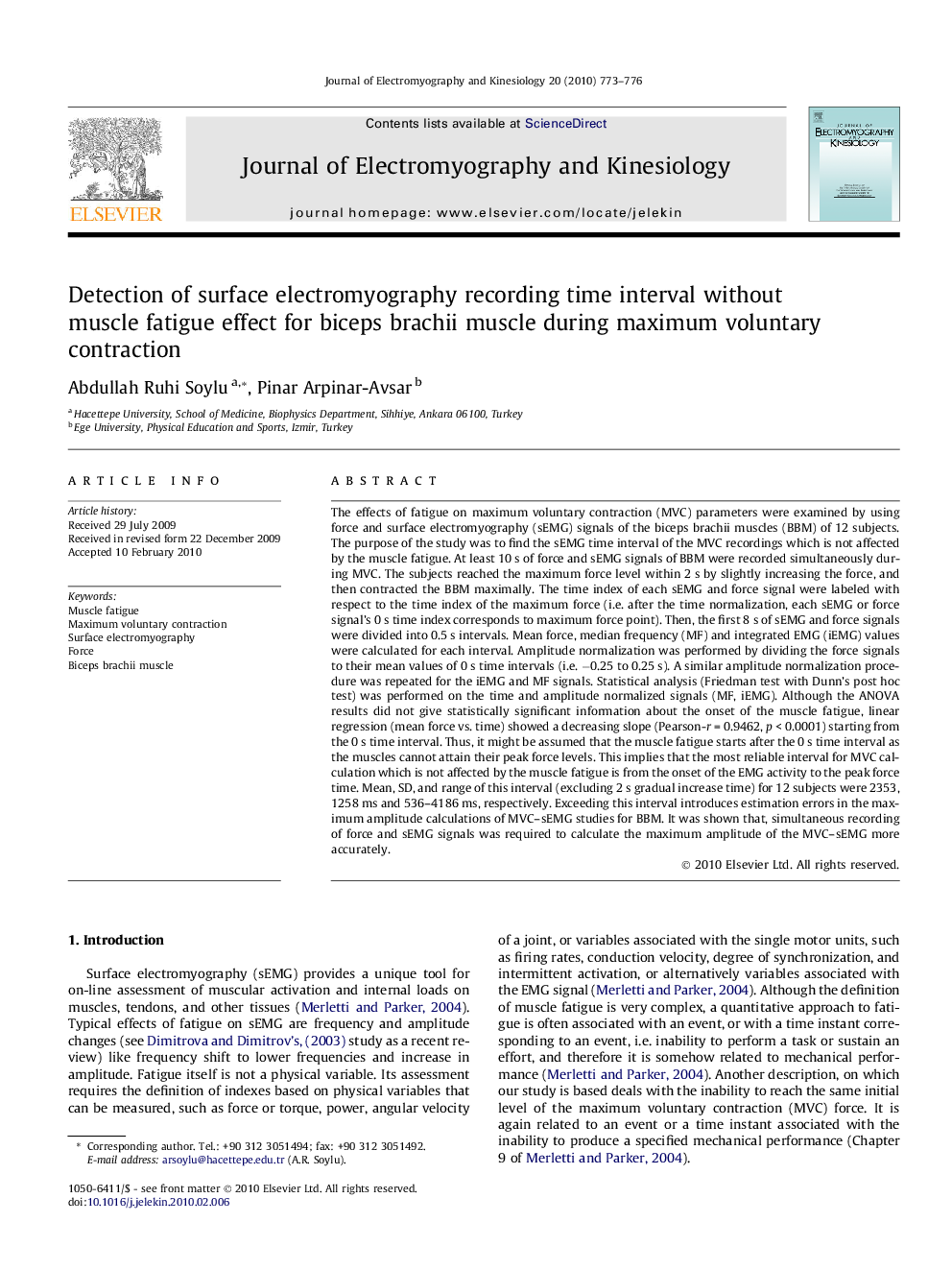| کد مقاله | کد نشریه | سال انتشار | مقاله انگلیسی | نسخه تمام متن |
|---|---|---|---|---|
| 4065179 | 1266242 | 2010 | 4 صفحه PDF | دانلود رایگان |

The effects of fatigue on maximum voluntary contraction (MVC) parameters were examined by using force and surface electromyography (sEMG) signals of the biceps brachii muscles (BBM) of 12 subjects. The purpose of the study was to find the sEMG time interval of the MVC recordings which is not affected by the muscle fatigue. At least 10 s of force and sEMG signals of BBM were recorded simultaneously during MVC. The subjects reached the maximum force level within 2 s by slightly increasing the force, and then contracted the BBM maximally. The time index of each sEMG and force signal were labeled with respect to the time index of the maximum force (i.e. after the time normalization, each sEMG or force signal’s 0 s time index corresponds to maximum force point). Then, the first 8 s of sEMG and force signals were divided into 0.5 s intervals. Mean force, median frequency (MF) and integrated EMG (iEMG) values were calculated for each interval. Amplitude normalization was performed by dividing the force signals to their mean values of 0 s time intervals (i.e. −0.25 to 0.25 s). A similar amplitude normalization procedure was repeated for the iEMG and MF signals. Statistical analysis (Friedman test with Dunn’s post hoc test) was performed on the time and amplitude normalized signals (MF, iEMG). Although the ANOVA results did not give statistically significant information about the onset of the muscle fatigue, linear regression (mean force vs. time) showed a decreasing slope (Pearson-r = 0.9462, p < 0.0001) starting from the 0 s time interval. Thus, it might be assumed that the muscle fatigue starts after the 0 s time interval as the muscles cannot attain their peak force levels. This implies that the most reliable interval for MVC calculation which is not affected by the muscle fatigue is from the onset of the EMG activity to the peak force time. Mean, SD, and range of this interval (excluding 2 s gradual increase time) for 12 subjects were 2353, 1258 ms and 536–4186 ms, respectively. Exceeding this interval introduces estimation errors in the maximum amplitude calculations of MVC–sEMG studies for BBM. It was shown that, simultaneous recording of force and sEMG signals was required to calculate the maximum amplitude of the MVC–sEMG more accurately.
Journal: Journal of Electromyography and Kinesiology - Volume 20, Issue 4, August 2010, Pages 773–776